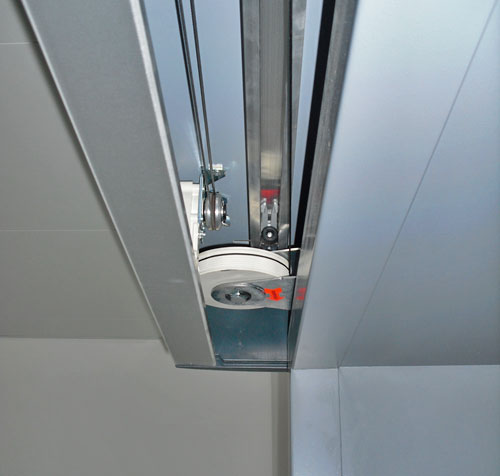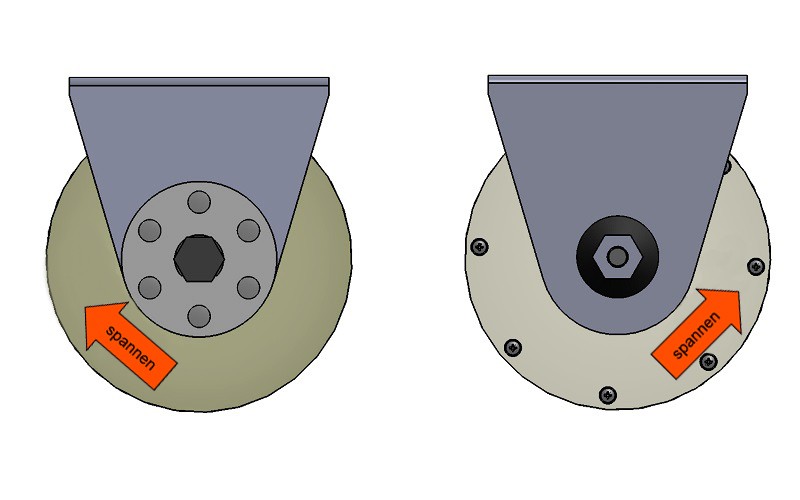Adjustment of closing force & closing speed
The closing force of the DICTAMAT 50 is adapted by pretensioning the spring rope pulley accordingly. The more the spring is pretensioned, the shorter becomes the available travel. The continuous adjusting of the closing speed is realized by adjusting the damping force of the radial damper.
Below are shown the diagrams for the standard versions of the DICTAMAT 50 with a spring rope pulley diameter series 118 mm with 25, 50 and 80 N and the LD 50 radial damper.
The spring rope pulleys feature a sliding hub. This allows to reduce the pretension of the spring without running the risk of damaging the spring.

Closing speed/travel of DICTAMAT 50
The closing force of the DICTAMAT is determined by the used spring rope pulley. Usually the DICTAMAT 50 is provided with a closing force of 50 N, but 25 N or 80 N are also possible.
The actual closing force can be adjusted by tensioning the spring rope pulley. The higher the pretension, the shorter the remaining travel.
Adjusting the closing force of the spring rope pulleys with sliding hub
On both sides of the spring rope pulley there is a tensioning screw (SW 17). Turning it in the direction of the arrow increases the preload, turning it against the direction of the arrow reduces the pretension.
Thanks to the integrated sliding hub, there is no risk of damaging the spring in the event of an error during tensioning.
Diagram for adjusting the closing force range of the DICTAMAT 50
The diagram shows the closing force adjustment options for the different DICTAMAT 50 models.
Adjusting the closing speed/force
The closing speed is adjusted using the slotted hexagon head screw on the LD 50 radial insert.




